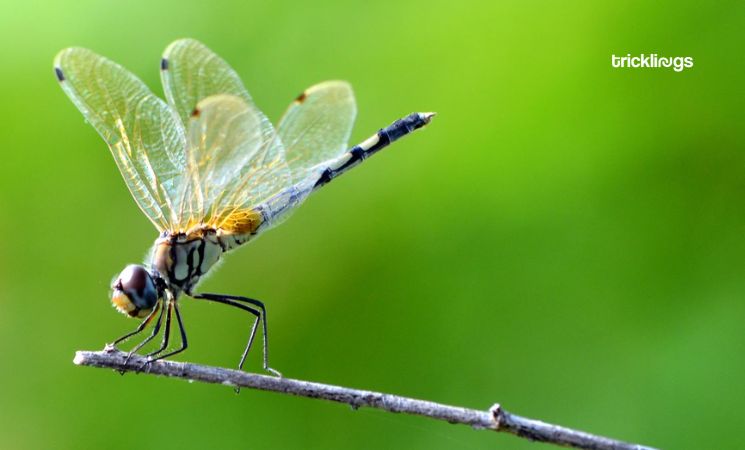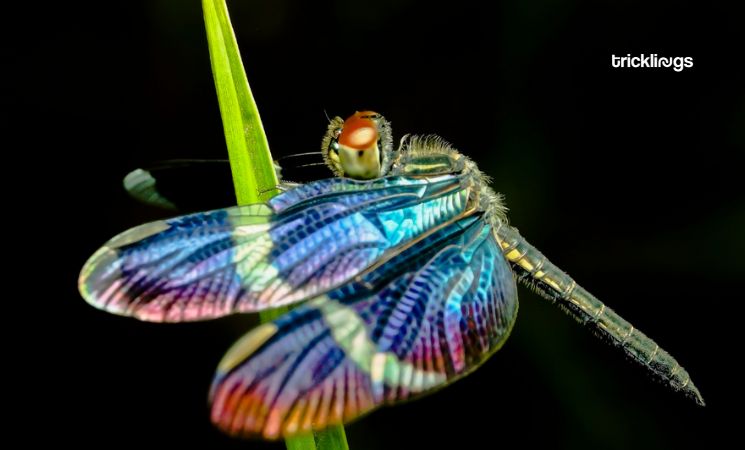In the flutter of delicate wings and the dance of light across shimmering bodies, the dragonfly holds a deeper meaning than meets the eye. Across different cultures and regions, this tiny creature has inspired myths, symbols, and stories, each steeped in the interpretation of transformation, adaptability, and even spiritual connection.
But perhaps the most intriguing belief that transcends borders is the notion of good luck when a dragonfly lands on you, a belief that stirs curiosity and reflection.
From Native American traditions to Japanese folklore, the dragonfly has been a consistent presence, carrying with it messages that connect the natural and spiritual worlds. For some, it is a sign of good fortune and transformation, while others view it as a symbol of the fleeting nature of life.
In Native American culture, the dragonfly is a symbol of change and renewal, reflecting the tribe’s connection to nature’s cycles.
According to different sources, the Navajo view the dragonfly as a representation of water and life, emphasizing its essential role in survival.
Meanwhile, in Japanese culture, the dragonfly is a symbol of strength, courage, and happiness. It has been noted that Samurai warriors revered the dragonfly as a sign of victory, its agile flight embodying resilience and the power to overcome challenges.
On the other hand, European folklore presents a more superstitious perspective. In parts of Scandinavia, dragonflies were once referred to as the “devil’s darning needle,” and were believed to sew the eyes or lips of people shut as punishment. Despite these darker connotations, in much of modern Europe, dragonflies are often associated with change, lightness, and joy, reflecting the ethereal nature of these creatures.
Chinese culture provides yet another view, interpreting the dragonfly as a symbol of prosperity and harmony. It’s widely seen as a sign of good luck, reminding us to enjoy life’s small pleasures.
According to several sources, dragonflies in China are also thought to be messengers from the spiritual realm, bridging the material and spiritual worlds.
The notion of the dragonfly as a spiritual guide is particularly poignant in Hinduism and Buddhism, where it is often seen as a symbol of self-realization and enlightenment. Its ability to move freely between water and air connects it to both the material and spiritual realms.

In the Celtic tradition, the dragonfly is a creature of the Otherworld, a reminder of the thin veil between life and the supernatural. Its swift movements and glimmering wings are said to bridge the gap between the known and the unknown, reminding those who see it of the magic that exists in the natural world.
Good Luck or Simply Coincidence?
Among the most widely shared beliefs is that having a dragonfly land on you is a sign of good luck. This belief can be found in various cultures, from Asian traditions to Native American legends. It is said to signify that positive change is coming, and that the individual who experiences this event is in tune with the natural flow of life.
Statistics on modern superstitions and beliefs show that a significant portion of people—particularly in Japan and China—still view encounters with dragonflies as auspicious. Surveys indicate that around 60% of respondents in Japan associate the dragonfly with happiness and fortune, while in parts of China, dragonfly encounters are believed to bring financial prosperity and personal growth.

Around the globe, dragonfly-themed items such as keychains, jewelry, and home décor have gained popularity. These items not only reflect the dragonfly’s natural beauty but also carry the symbolism of change, transformation, and good luck. Whether as a decorative trinket or a personal talisman, dragonfly keychains can serve as a reminder of the power of adaptability and the elegance of nature.
Some Interesting Insights about Dragonflies
Dragonflies are fascinating creatures that offer unique insights into evolutionary biology, ecology, and even the mechanics of flight.
Dragonflies belong to the order Odonata and are some of the oldest insects on Earth. They have been around for over 300 million years, predating dinosaurs. Their ancient relatives were much larger, with wingspans of up to 2.5 feet, which hints at the higher oxygen levels in prehistoric times. Despite their long history, dragonflies have remained relatively unchanged, showcasing their evolutionary success and adaptation.
Dragonflies are top predators in the insect world, especially during their aquatic nymph stage, which can last from a few months to several years, depending on the species. Both in their larval and adult stages, dragonflies are voracious hunters. Studies have shown that dragonflies catch their prey mid-air with a success rate of about 95%, making them one of the most efficient predators in the animal kingdom. This high success rate is attributed to their exceptional vision and flight agility.
One of the most scientifically interesting aspects of dragonflies is their compound eyes. Each eye contains about 30,000 facets, giving dragonflies almost 360-degree vision. Their ability to detect polarized light allows them to see a much broader spectrum of light than humans, including UV light. This exceptional vision aids them in hunting prey and navigating their environment with incredible precision.
Dragonflies are known for their unique flight abilities, which have been studied extensively in the field of aerodynamics. They possess two pairs of wings that can move independently of each other, allowing them to hover, fly backward, or even pivot mid-air. This flight versatility makes them incredibly agile, capable of sudden changes in direction and speed, which is critical for both hunting and evading predators. Scientists study dragonflies’ flight patterns to inspire advancements in drone technology and robotics.

Dragonflies are also used as bioindicators in scientific studies, particularly for assessing the health of freshwater ecosystems. Because dragonflies lay their eggs in water and their nymphs are aquatic, their presence or absence in an environment can indicate the quality of the water, particularly in terms of pollution or oxygen levels. A healthy population of dragonflies usually signals a clean and balanced ecosystem.
Dragonflies are known for their complex and acrobatic mating rituals. Males often exhibit territorial behavior, engaging in aerial battles with rivals to secure mating areas. The actual act of mating is quite unique as well: males transfer sperm to a secondary sexual organ before coupling with the female, and the pair forms a distinctive “heart” shape during copulation.
Dragonflies come in a stunning array of colors that can range from vibrant and striking to more subtle and muted hues. Their colors vary by species, age, sex, and environmental conditions. Some of the common colors seen in dragonflies include:







1. Blue
Many dragonfly species exhibit shades of blue, including the Blue Dasher and Blue Skimmer. This color can range from deep, royal blue to lighter sky tones.
2. Green
Species like the Common Green Darner are known for their bright green bodies. This color is often seen in the thorax and eyes of the dragonfly.
3. Red
Red dragonflies are quite striking, with species such as the Red Saddlebags or Scarlet Darter showcasing deep crimson and scarlet hues.
4. Yellow
Some dragonflies, such as the Yellow-veined Darters, display shades of yellow, often along with black or brown stripes.
5. Black
Many dragonfly species have black patterns or markings, which can appear solid or combined with other colors, like in the Black Saddlebags dragonfly.
6. Brown
Brown dragonflies are often more subtly colored, with earthy tones that help them blend into their natural surroundings. Species like the Brown Hawker have bronze or coppery wings.
7. Purple
Although rarer, certain dragonflies display beautiful purple tones. The Purple Skimmer is one example of this unique coloration.
8. Metallic Hues
Dragonflies can also exhibit metallic colors, such as gold, bronze, or iridescent shades. These colors are more common on their wings or bodies and can shift depending on how the light hits them, much like the Banded Demoiselle, which has a metallic green-blue body.
9. Iridescent or Transparent Wings
Many species have transparent wings with veins that can reflect iridescent colors. Some wings also have colored patches, often referred to as “saddlebags,” like in the Red Saddlebags dragonfly.
Dragonfly colors can also change with age. Juvenile dragonflies tend to have duller colors, which become more vibrant as they mature. Males and females of the same species may also display different colors due to sexual dimorphism.
This colorful array serves important purposes, such as camouflage, mating displays, or territorial signaling.
And one last and important thing, dragonflies can bite, their bite is generally harmless, but they do so primarily in self-defense.
Dragonflies have mandibles (jaw-like structures) that they use to catch and eat their prey, which consists of smaller insects. However, their bite is not strong enough to break human skin, and they are not aggressive toward people.
Dragonflies are beneficial insects in the ecosystem, known for their insect control abilities, especially for eating pests like mosquitoes. Though they may look intimidating with their large wings and fast movements, they pose no real threat to humans.










